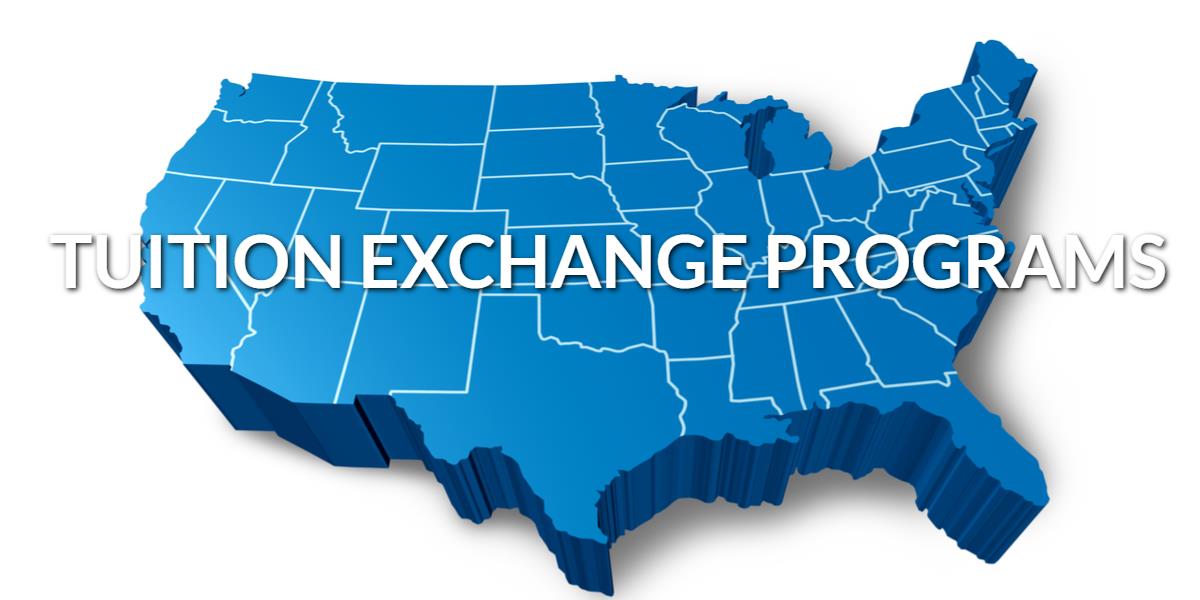REDUCE OUT-OF-STATE TUITION USING REGIONAL TUITION EXCHANGE PROGRAMS

I wrote a well-read post last year called TUITION HACK: LITTLE-KNOWN WAYS TO PAY IN-STATE TUITION RATES AT OUT-OF-STATE COLLEGES. It’s about cutting the high cost of out-of-state public universities by becoming an actual resident of the particular state where the college was located.
As I mentioned in the article, there are four basic elements used to determine residency by these out-of-state public universities. They are, 1) Duration of residence requirement, 2) Financial independence, 3) Proof of residency, and 4) Non-academic purpose for becoming a resident.
The price an out-of-state student pays can be 50% higher than that charged to in-state residents. However, becoming an actual resident of the state that your college choice is located can be very difficult. Another way to bring down the cost of out-of-state tuition is through regional exchange programs.
Regional exchange programs allow residents of participating states to attend member colleges at the school’s in-state rate, or at a significantly discounted cost. Here are the current four exchange programs in the United States:
Academic Common Market
https://www.sreb.org/academic-common-market
Midwest Student Exchange
http://msep.mhec.org
New England Student Exchange
http://www.nebhe.org/programs-overview/rsp-tuition-break/overview/
Western Undergraduate Exchange
https://www.wiche.edu/wue
There are some restrictions on these out-of-state reciprocity programs.
Not all states participate. New York, Pennsylvania, Ohio, New Jersey, Iowa, and North Carolina do not participate in any program.
Not all public schools within each state participate in any program, especially the most popular state flagship universities.
Schools that do participate Western Undergraduate Exchange and Midwest Student Exchange may restrict the majors available and the total number of program participants allowed.
The New England Regional Student Program and the Academic Common Market require that students major in a program not available in their home state. If they change majors, they lose the discount.
Yes, there are a lot of stipulations you must be aware of, but if the student qualifies he or she could potentially eliminate the out-of-state premium to their ideal college choice. The following table lists the exchange programs for each state.
State |
Exchange Program |
| Alabama | Academic Common Market |
| Alaska | Western Undergraduate Exchange |
| Arizona | Western Undergraduate Exchange |
| Arkansas | Academic Common Market |
| California | Western Undergraduate Exchange |
| Colorado | Western Undergraduate Exchange |
| Connecticut | New England Student Exchange |
| Delaware | Academic Common Market |
| Florida | Academic Common Market |
| Georgia | Academic Common Market |
| Hawaii | Western Undergraduate Exchange |
| Idaho | Western Undergraduate Exchange |
| Illinois | Midwest Student Exchange |
| Indiana | Midwest Student Exchange |
| Iowa | None |
| Kansas | Midwest Student Exchange |
| Kentucky | Academic Common Market |
| Louisiana | Academic Common Market |
| Maine | New England Student Exchange |
| Maryland | Academic Common Market |
| Massachusetts | New England Student Exchange |
| Mississippi | Academic Common Market |
| Montana | Western Undergraduate Exchange |
| Nebraska | Midwest Student Exchange |
| Nevada | Western Undergraduate Exchange |
| Oklahoma | Academic Common Market |
| New Hampshire | New England Student Exchange |
| New Mexico | Western Undergraduate Exchange |
| New Jersey | None |
| New York | None |
| North Carolina | None |
| North Dakota | Midwest Student Exchange |
| Ohio | None |
| Oregon | Western Undergraduate Exchange |
| Pennsylvania | None |
| Rhode Island | New England Student Exchange |
| South Dakota | Western Undergraduate Exchange |
| South Carolina | Academic Common Market |
| Tennessee | Academic Common Market |
| Texas | Academic Common Market |
| Utah | Western Undergraduate Exchange |
| Vermont | New England Regional Student Program (RSP) |
| Virginia | Academic Common Market |
| Washington | Western Undergraduate Exchange |
| West Virginia | Academic Common Market |
| Wisconsin | Midwest Student Exchange Program |
| Wyoming | Western Undergraduate Exchange |
Posted by Ron Them
He is a former Chief Financial Officer of a Fortune 500 company and currently owns his own financial advisory company specializing in cash flow planning for business owners and executives. He developed the Cash Flow Recovery™ process that uses cash flow management principals to increase asset value and build wealth for business owners.
He is also the originator of several software calculators to help advisors and families make college affordable, including:
* College QuikPlan EFC Calculator
* "Find the Money" College Cash Flow Calculator
* College Debt Reduction Calculator
Ron has been quoted in U.S. News and World Report, Kiplinger's Personal Finance, Smart Money, Financial Advisor Magazine, Small Firm Profit Report, Practical Accountant, LIMRA's Market Facts, Senior Advisors Magazine, HR Magazine, BenefitNews.com, Employee Benefit News Magazine, ProducersWeb.com, Entrepreneur Magazine, Insurance Selling Magazine, CollegeNews.com, The Christian Voice, and Columbus CEO Magazine.
